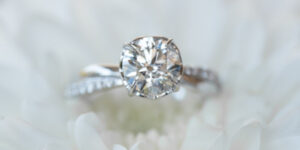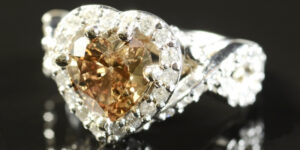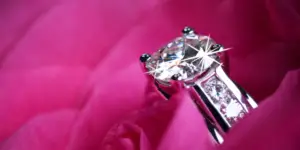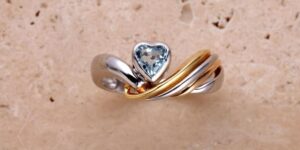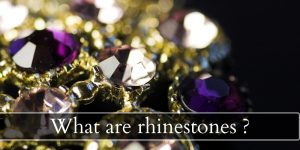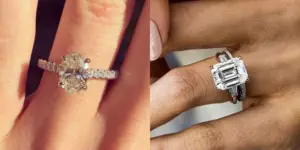Sapphires are beautiful, expensive, and much more versatile than you’d first think. For one thing, sapphires aren’t used just in jewelry, they are also used in high-quality watches, as a lens, and in industrial settings. Not only that, but sapphires come in quite a few colors. when you’re just learning about them, this information can throw you off, but let us explain. You’ll fall in love with sapphires all over again.
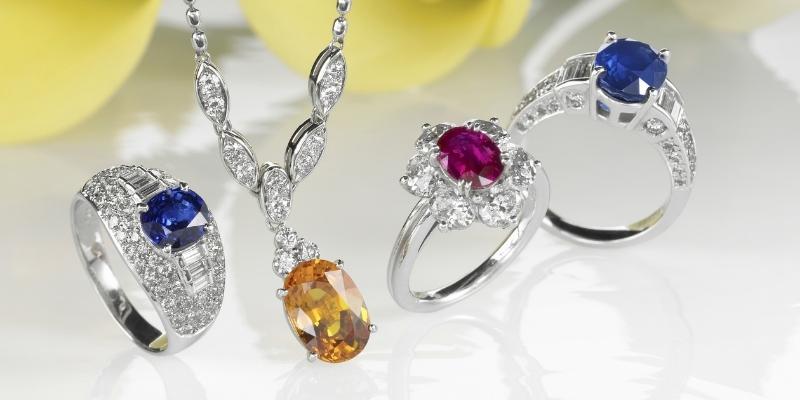
Are all sapphires blue ?
Not all sapphires are blue, this gemstone comes in different colors like yellow, purple, orange, green, yellow, pink, and the beautiful padparadscha (a pink-orange). Most of the sapphires you see for sale are blue, because it is their most common color ad the one most people associate with a sapphire. They are also the most expensive, right after the padparadscha sapphire.
Blue sapphires are heat treated for color improvement
The natural color of most sapphires is quite pale, regardless of their base color. This is also the case for blue sapphires, they often don’t come out of the mine with that striking blue shade. Nearly all blue sapphire on the market is heat treated. This process improves color dramatically, and also resolves some clarity issues.
You see, one of the reasons many sapphires are so pale is because they have a lot of rutile inclusions (known as silk) which dulls the color. These inclusions dissolve during the heat treatment, leading to a stronger color and more clarity in the sapphire.
This treatment is also applied to the other color sapphires, but blue ones are the most sought-after so they are the ones most jewelers will carry.
How do sapphires get their colors ?
Sapphires get their color from trace amounts of other elements, such as aluminium, chromium, and iron. Sapphires are in fact a form of corundum, which is a perfectly white or clear. It requires aluminium, chromium, or iron to give it color, and each sapphire has a unique mix of these trace elements.
Aluminium gives a blue color to corundum, so sapphires with mostly aluminium will turn out perfectly blue. Chromium gives a red color to corundum, so sapphire with mostly chromium, with look pink/red. Iron gives a yellow color to corundum, so sapphires with mostly iron will have a yellow/orange color.
Any combination of these three elements will result in what we usually see in sapphires. Here are a few examples:
- blue sapphires get their color from aluminium with no other elements
- pink sapphire get their color from dominant chromium with a bit of aluminium
- green sapphires get color from an even mix of iron and aluminium
- teal sapphires get their color from dominant aluminium with a bit of iron
- padparadscha and orange get color from an even mix of iron and chromium
- purple get their color from dominant aluminium and a bit of chromium
- yellow sapphire has iron with no other elements
Of course that is a very simplified version of what is going on in a sapphire. Some have a third element in the mix that gives more depth of color, but you get the gist of it.
Read also: Does Morganite Fade ? Does It Get Cloudy ?
Are rubies sapphires ?
Rubies are corundum with only chromium for color, no aluminium. Sapphires are any and all colors, except those with a very high chromium amount, which results in that deep red color. Sapphires are rubies are essentially the same thing, forms of corundum, but only very red corundum may be classed as ruby. Anything else of any other color is classed as a sapphire.
There is a fine, fine line between pink sapphires and rubies. Pink sapphires have very high levels of chromium but also have a tiny bit of aluminium, which rubies do not have. And despite their high chromium, it’s still not nigh enough to be called a ruby.
Which may come in handy, because rubies are twice as expensive as sapphires, and many rubies appear deep pink instead of red. So you could essentially get a pink sapphire that looks like a lighter ruby, without the immense cost of a ruby.
What is the rarest color of sapphire ?
The rarest and most expensive color of sapphire is the padparadscha sapphire, which is a unique blend of orange and pink. These sapphires sometimes have a sort of color zoning going on, but the switch from orange to pink is very blurred so it appears to be a seamless transition of color. Most of the time the color is a perfect, even blend between pink and orange, appearing dusty rose.
Some padparadscha appear more golden in color, some appear more pink-purple, and some are nearly orange. As you read before, each individual sapphire has its own element mix that gives it a very specific and unique color that will not be found in another sapphire, whether it’s a padparadscha or not.
Can you wear sapphire every day ?
Yes, sapphires can safely be worn every day, even in rings or bracelets, since it is a very tough gemstone. It scores a 9 out of 10 on the Mohs hardness scale, which makes is very scratch-resistant. The only thing that can hurt a sapphire is another sapphire or ruby, a moissanite (9.25 Mohs) or a diamond (10 Mohs).
So if your engagement ring features a sapphire it is safe to wear around the house, shopping, or just doing most activities. OF course, it will survive for longer if you remove the ring before doing anything strenuous such as a workout, moving furniture, gardening, or anything that may damage your ring.
How much is a 1 carat blue sapphire ?
Blue sapphires sell for about $1,500 per carat for a vivid color, but their price shoots up to an average of $2,500 per carat if the sapphire is not heat treated but still features a beautiful, vivid blue. These are natural blue sapphire prices, lab-grown sapphires reach about $400 per carat. The are the same thing as a natural one, just grown in a lab at a much faster rate.

I’m the main author for jewelrymaterialguide.com. I started this site after we did tons of research before our wedding and noticed that there is information about rings, jewelry, and so on that is really hard to find on the internet.

